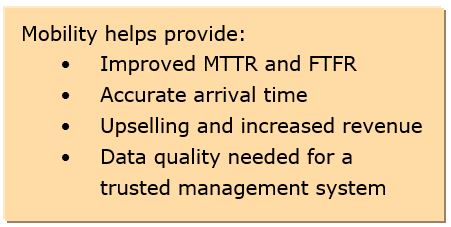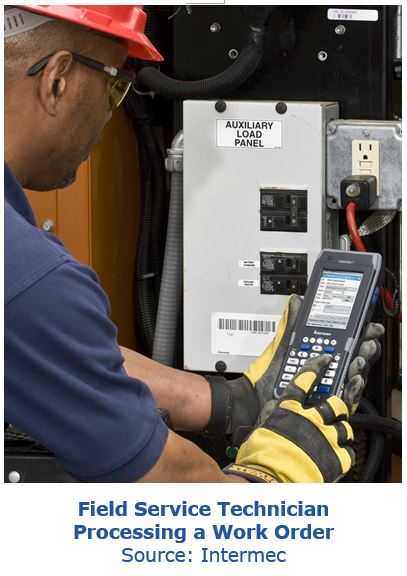

Part 3 of a three part series on the impact of IIoT on OEMs and their dealerships. Part 1. Part 2.
IIoT-enabled remote connectivity and analytics offer equipment dealerships and rental companies an opportunity to grow revenues through new maintenance services, while providing higher uptime and customer satisfaction for the end user. OEMs, dealerships and rental companies need to adopt new business processes and software that support adoption of this growing business model in which users outsource maintenance to the local dealership.
The number of machines serviced by a dealership or rental company can range into the tens of thousands, with a variety of customer relationships and associated service level agreements (SLAs). These companies need a means to assess the economics for each machine to determine when maintenance costs grow to the point that it should be refurbished or replaced. The entire equipment lifecycle encompasses initial forecasting and sale of the equipment; through to shipment, renting, servicing, overhaul, and final disposal. Each asset has its unique history of activity, revenue, and costs that determine the optimal times for refurbishment or replacement.
Managing this lifecycle for thousands of assets goes well beyond the capabilities of ad hoc entries by multiple people into a jumble of Excel spreadsheets. Enterprise-level applications like the Infor Equipment Rental solution can provide an effective solution for managing the workflow, business processes, and governance. Equipment profitability assessment captures the financial transactions for the equipment and its sub-systems. A budget model allows application users to understand the income and costs for each item, and the associated SLA for uptime. This can trigger the need for a major maintenance activity like an engine rebuild, overall refurbishment, or upgrade.
When the costs and income start to negatively impact profitability and the asset is no longer economically viable, software is needed to provide an alert. For a customer’s machine, this involves comparing cost vs. replacement. For the dealer’s rental equipment, this involves comparing revenue and cost. Now with IIoT-enabled remote monitoring and analytics, the dealer has real-time information that provides a better understanding of the expected costs to support a clear, fact-based evaluation.
IIoT also provides access to operating data to help extend asset longevity. Alerts provide awareness of mistakes made by inexperienced operators, triggering appropriate training to help avoid additional equipment damage or safety issues. Also, the dealer knows when use exceeds that specified in the rental agreement.
Since the dealership or rental company is usually named among the many parties involved in product liability lawsuits, the documentation generated by the application can be held indefinitely and accessed easily should it ever be needed to support a successful defense.
 As maintenance becomes a larger portion of an equipment dealership’s or rental company’s revenue, it becomes increasingly important to deliver those services efficiently and competitively with acceptable margin. Mobile devices and software provide technicians with access to the instructions, drawings, and other information needed to improve the mean-time-to-repair (MTTR) and first time fix rate (FTFR) – two key metrics for repair effectiveness and customer satisfaction.
As maintenance becomes a larger portion of an equipment dealership’s or rental company’s revenue, it becomes increasingly important to deliver those services efficiently and competitively with acceptable margin. Mobile devices and software provide technicians with access to the instructions, drawings, and other information needed to improve the mean-time-to-repair (MTTR) and first time fix rate (FTFR) – two key metrics for repair effectiveness and customer satisfaction.
With a mobile device and network access, technicians can access maps and directions to help them navigate and accurate determine arrival times, another key customer need.
When a technician is at the customer’s site, occasions occur where the job has a broader scope than anticipated, or additional pieces of equipment need repair. A mobile device provides the opportunity to modify the original work order or add new ones for the additional maintenance. The technician can upsell and increase revenue while with the customer.
 The mobile device allows processing of work orders while the technicians do the work as part of their workflow. This avoids typical issues with paper work orders, such as data entry errors and lack of timely information in the associated management systems. Mobile devices and software help improve technician compliance and data quality, making the field service management software a trusted tool for planning, scheduling, and billing.
The mobile device allows processing of work orders while the technicians do the work as part of their workflow. This avoids typical issues with paper work orders, such as data entry errors and lack of timely information in the associated management systems. Mobile devices and software help improve technician compliance and data quality, making the field service management software a trusted tool for planning, scheduling, and billing.
With mobility, the technician closes the work order before leaving the job site allowing revenue recognition and invoicing immediately upon work completion. This business process automation reduces the elapsed time to issue an invoice, improving cash flow.
The introduction of new technologies often provides a reason for companies to review their business processes and identify potential performance improvements. The time is ripe for dealers, rental companies and their OEM suppliers to assess the viability of their business management software in this changing business environment.

